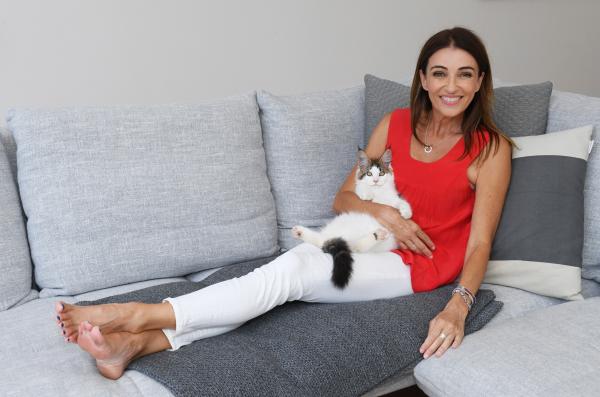
Around 27 per cent of Australian households include at least one feline friend, making them the second most popular pet in the country.
But despite the love Aussies have for our kitties, the RSPCA still takes in upwards of 45,000 surrendered cats each year – and while many different reasons are given, one that crops up time and again is cats’ toileting behaviour.
Whether they’re going outside their litter trays (leaving frustrated owners to clean up the mess) or their humans simply can’t stomach the smell, cats’ pooping habits sadly see them kicked out of the home more often than you might expect.
In fact, according to both the Cat Protection Society of NSW and the RSPCA (South Australia), behavioural issues such as problem toileting are among the top reasons cats are surrendered to shelters.
“We know that one of the main areas of concern and often a reason for surrender is people having issues with their cat using the litter box,“ shares Australian vet and TV presenter Dr Katrina Warren, who has teamed up with PetSafe Brand Australia to highlight the facts around cats’ toilet behaviours.
“Another massive issue is people not keeping their pets indoors – which they really should for the cats’ safety – because they don’t want to deal with the task of emptying and cleaning the litter box.“
Sure, dealing with kitties litter is unpleasant.
“Anyone that’s ever had these issues with a cat knows how incredibly stressful it is because the last thing you want is to come home and find your cat’s gone to the toilet where they shouldn’t,“ Dr Katrina said.
“But there could be many reasons for this unwanted behaviour.“
If Snowball isn’t doing his business in the right spot, you must first rule out any medical causes.
“Cats are, by nature, fastidiously clean, so a wee or poo outside the tray indicates something is bothering them,“ Dr. Katrina explains.
“The essential first step is to rule out any medical issues. Conditions such as lower urinary tract disease, for example, can cause pain and a change in habits, so a visit to the vet is very important.“
If it’s simply the smell that has you looking for alternative living arrangements for your feline, consider this: cats don’t much like the stench either. In fact, if their litterboxes aren’t cleaned frequently, this can not only cause a stinky situation for their humans but also prompt these cleanliness-obsessed creatures to go in a more ’appealing’ spot … like, say, other parts of your home.
So before you kick Fluffy out, consider whether her litter is clean enough. After all, she can’t clean it herself.
“Many elimination problems result from a litter tray not being sufficiently pristine for your cat’s highly refined sense of smell,“ Dr Katrina said.
And remember, a tray that seems clean to us may still be dirty in your cat’s eyes, reports the Australian Cat Protection Society website.
Removing any faeces as soon as possible and swapping in fresh litter every day is the best way to keep the tray up to your cat’s high standards – while using a product like PetSafe’s ScoopFree Second Generation Self-Cleaning Litter Box means you don’t have to handle the task of poop-scooping at all, while your cat has a sweet-smelling spot to toilet (and remains a valued member of the family).
“In the right household, it could be a very practical solution if you’re worried about smell,“ Dr Katrina said.
PetSafe’s new ScoopFree Second Generation Self-Cleaning Litter Box, which is also available with an optional privacy hood with side entry, takes all the hassle out of your cat’s toilet habits.
For more information, visit PetSafe.com/AU





